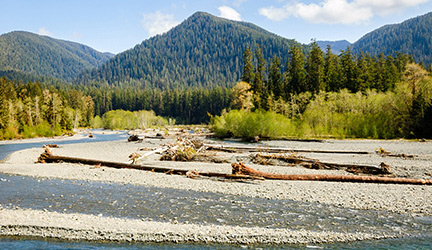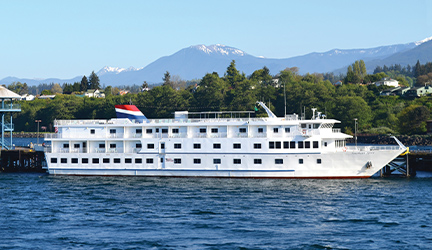Stretching between the Cascade Mountains and the Pacific Ocean, Washington’s Skagit Valley blooms each spring into a living masterpiece of color. Though this rural region is now synonymous with tulip farming, it wasn't always the floral powerhouse it is today. Over the past century, a blend of European agricultural traditions, a near-perfect climate, and a deep-rooted spirit of innovation have transformed the valley into one of the world’s most celebrated tulip centers. Today, thousands flock each April to walk through fields awash in brilliant reds, pinks, yellows, and purples, celebrating a crop that carries with it centuries of history.
Experience the Skagit Valley’s colorful transformation firsthand with American Cruise Lines’ Tulip Festival cruises and Puget Sound cruises to see these breathtaking fields for yourself.
The Origins of Tulip Fields in the Pacific Northwest
The story of Skagit Valley’s tulips begins not in Washington, but thousands of miles away in the Netherlands. Tulips, first introduced to Europe from the Ottoman Empire in the 16th century, quickly became a cultural symbol in Dutch society, associated with beauty, status, and a love for gardening that runs deep to this day.
When Dutch immigrants arrived in the United States in the 19th and early 20th centuries, they brought more than traditions and language—they brought a passion for tulip cultivation. Many found their way to Washington State, where the Skagit Valley’s mild climate, steady rainfall, and fertile soil mirrored the conditions of Holland. The combination of cool springs, moderate summers, and well-drained land offered ideal growing conditions for tulip bulbs, allowing them to thrive in their new home.
Commercial tulip farming in Skagit Valley formally began in the 1940s and 1950s, when small family-run operations expanded their fields and established the area as a serious contender in the global flower market. Today, the legacy of these immigrant farmers lives on in the dazzling fields that cover the landscape each spring.
Skagit Valley Tulip Festival
First celebrated in the spring of 1984, the Skagit Valley Tulip Festival began as a modest event designed to showcase the beauty of local farms and the skill of Washington’s growers. It very quickly captured the public’s imagination. What started as a weekend event has grown into a month-long celebration, drawing visitors from all around the world each April. This is the best time to visit, not just for the peak of the tulip bloom, but also for the mild weather that makes walking through the fields the perfect afternoon activity. Learn more about timing your visit in our Best Time to Cruise Puget Sound blog.
Tulip Town
A cornerstone of the Skagit Valley Tulip Festival, Tulip Town is a family-run farm known for its stunning displays and welcoming atmosphere. Founded by Dutch immigrants in the 1980s, Tulip Town is famous for its broad swaths of color and charming indoor displays that offer a respite from spring rains. Tractor-pulled trolley rides through the fields, art shows, and vibrant murals add to the fun.
RoozenGaarde
Perhaps the most iconic of Skagit Valley’s tulip farms, RoozenGaarde traces its roots back to the early days of Dutch settlement in the valley. Operated by the Roozen family for generations, RoozenGaarde showcases a meticulously designed display garden alongside expansive fields bursting with carefully bred tulip varieties. Known for precision planting and spectacular color patterns, this farm has helped set the standard for tulip cultivation in the United States.
How to Take Care of Tulips in Washington
The process of yielding a successful tulip crop in the Skagit Valley is a year-round commitment. Tulips are planted in the fall, typically between late September and early November, when the soil is still workable but cool enough to encourage proper root development. Farmers select well-drained fields to avoid bulb rot and ensure healthy growth during the wet winter months.
Temperatures between 35 and 50 degrees Fahrenheit during winter are ideal, allowing tulips to undergo a necessary period of dormancy known as "vernalization." This cold exposure triggers the biological processes that lead to strong, vibrant blooms in spring. As the weather warms in March and April, the tulips emerge, displaying buds that gradually open into brilliant cups of color.
Once blooming ends, farmers carefully deadhead the flowers—removing spent blossoms to divert energy back to the bulb rather than seed production. The bulbs are then dug up, cleaned, sorted, and stored in cool, dry environments until they are replanted or sold in the next growing cycle. Every step demands precision, timing, and a deep understanding of the land’s rhythms.
Visit Skagit Valley and Experience the Tulips for Yourself
From its Old World origins to its vibrant present, the story of the Skagit Valley tulips is one of resilience, tradition, and beauty cultivated by generations of dedicated growers. Ready to step into a living sea of color? Explore our Tulip Festival cruises or Puget Sound cruises and experience this spring spectacular.


